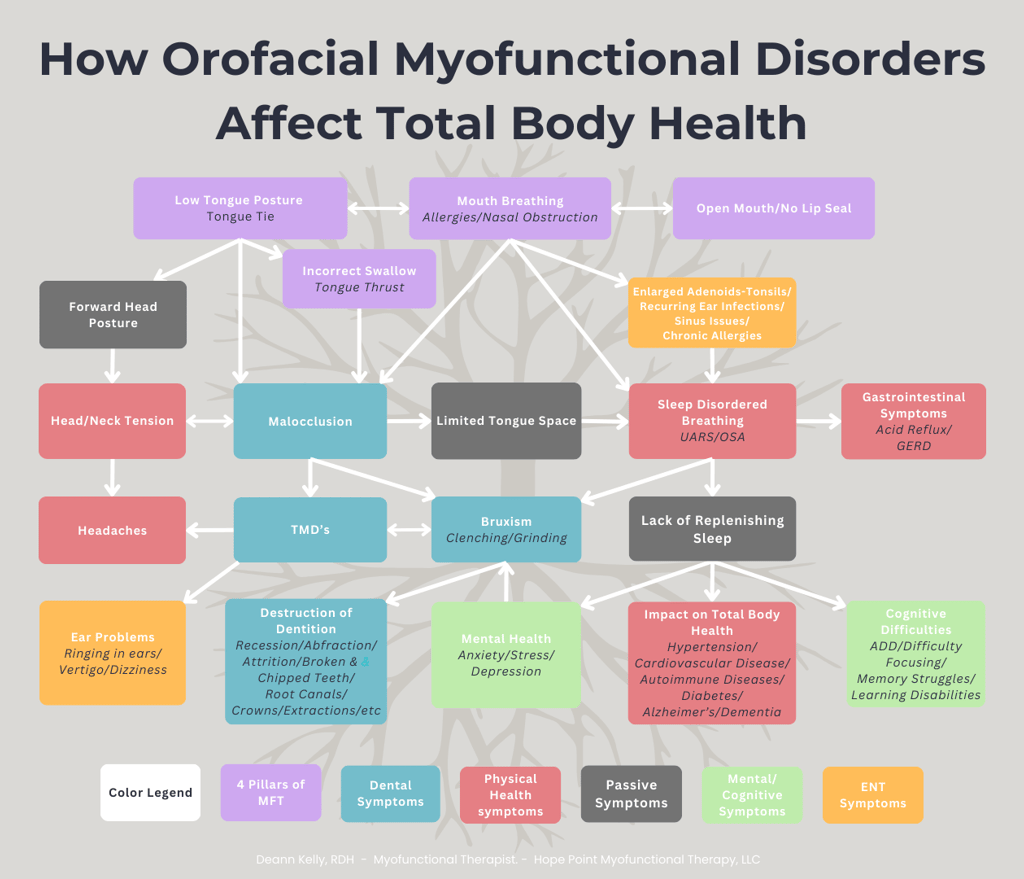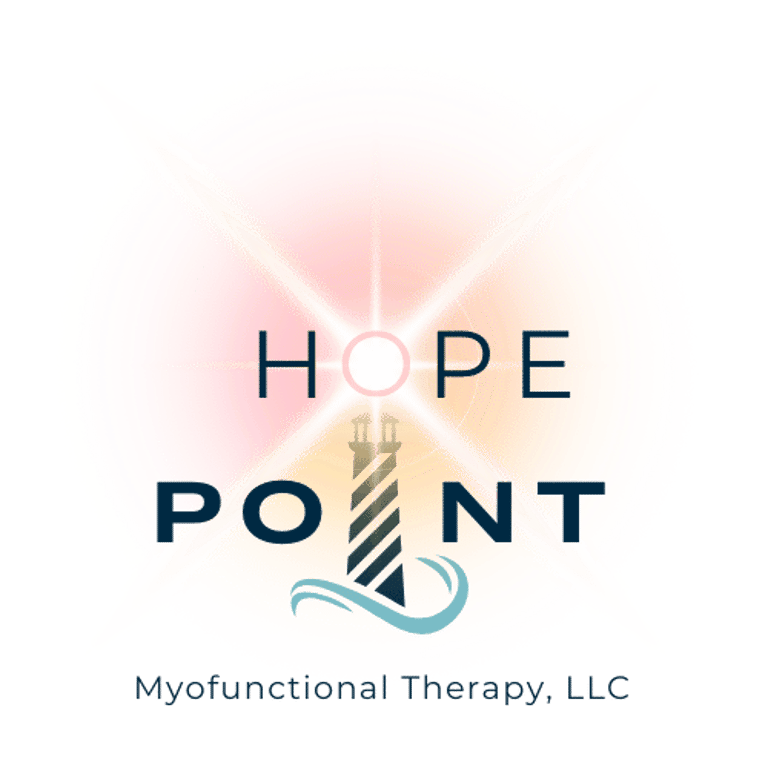The "string" that is under your upper lip and/or tongue when you raise them is part of your body's front line fascia. When that fascia, called frenulum, is tighter than it was designed to be, it can wreak havoc on your entire body, not just in adults but in developing children. Watch this video for a great demonstration.
What is Myofunctional Therapy?
Myofunctional Therapy
(also known as Orofacial Myology and Orofacial Myofunctional Therapy)
is a therapy designed to improve the function of the muscles of the face, tongue and mouth which in turn affects whole body health. Built into the therapy are techniques used to help patients learn to reduce breathing patterns from a state of chronic over-breathing (sympathetic- fight or flight) to a state of relaxation breathing (parasympathetic- rest and digest). Simply learning to breathe solely through the nose rather than the mouth, both day and night, is the most significant key.
Why Myofunctional Therapy?



Orofacial Myofunctional Therapy (myo) specializes in treating the fascia of the face, head and neck through personalized stretches and exercises. We are also specifically trained to recognize when the fascia needs surgical intervention with a tongue tie release as part of the therapy, and will refer to doctors who have been trained with the newest protocol for the procedure.
Is Myofunctional Therapy new?
How can Myofunctional Therapy help with TMJ pain, back problems and chronic migraines?
Nope! As a matter of fact...
In the early 1900's, Edward Angle, the "father of orthodontics" began to recognize the role of myofunctional disorders and their connection with dental issues. He created the practice of myofunctional therapy in order to train the tongue and other oral muscles to function in a way that would not be detrimental to the oral cavity.
In 1971, orofacial myofunctional therapy became a formal discipline and the International Association of Orofacial Myology was established.
In 1975, the first publication of the International Journal of Orofacial Myology was published.
Current: the field had slowly grown over the decades but has recently exploded due to doctors publishing research and case studies, more mothers desiring to nurse their babies (tongue ties are recognized when nursing over bottle-feeding), the internet spreading information more quickly (it takes 15-20 years for research to get into text books in the schools), and people wanting to find answers for the root causes rather than just be medicated for the symptoms (SO much money being spent - I speak from experience).
Schedule an appointment for an initial evaluation with a myofunctional therapist. (That’s me!)
If you or your child are a candidate and you’d like to move forward with treatment, start your personalized therapy which includes approximately 12-15 sessions, meeting every two weeks and doing exercises for 5 minutes 2 x day in front of a mirror.
If a tongue tie release is necessary, that would be scheduled to take place around session 3-4, week 6-8, of the therapy. Special pre and post op exercises will be given for the procedure. I will have a provider that I recommend for the procedure and will coordinate treatment with. (It needs to be a specialist trained in the newest protocol of the releases.)
Complete the therapy.
Enjoy restored function.
It works to:
Improve breathing patterns-reducing mouth breathing and nasal congestion
Correct tongue posture and tongue thrust
Enhance chewing and swallowing function
Reduce snoring, poor sleep quality and symptoms of sleep apnea.
Reduce or alleviate chronic TMJ issues, neck tension and headaches/migraines.
